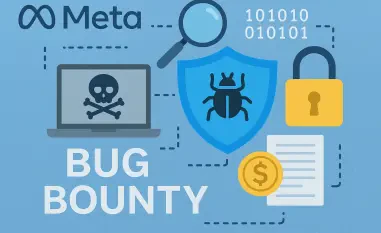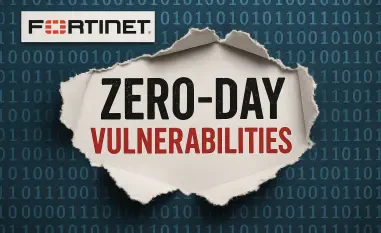In the swiftly evolving world of cybercrime, few names are as intricately linked as ToyMaker and CACTUS. Malik Haidar, a cybersecurity expert with significant exposure to dealing with threats across global corporations, provides a comprehensive view of how these alliances operate. Malik’s career focuses on blending business understanding with advanced cybersecurity strategies, crucial in today’s business-driven cyber defense.
Can you explain the role of an Initial Access Broker (IAB) like ToyMaker in the cybercrime ecosystem?
An Initial Access Broker, like ToyMaker, plays an essential role in the cybercrime landscape by primarily acting as a middleman. They breach and gain control over systems but typically do not exploit the access themselves. Instead, they sell this access to other sophisticated entities, such as ransomware gangs, who have the tools and motivation to monetize the breach through demands for ransom or other schemes.
What specific tactics does ToyMaker use to gain initial access to targeted systems?
ToyMaker takes advantage of a wide array of known vulnerabilities in internet-facing applications to breach systems initially. The approach is somewhat opportunistic; they scan for weak spots in security infrastructure and strike where defenses are weakest, thus enabling them to gain a foothold from which further exploits can be executed.
How does ToyMaker ensure that its malware, LAGTOY, remains undetected during deployment?
LAGTOY is adeptly engineered to fly under the radar by establishing a secure communication line with its command-and-control server. It retrieves instructions stealthily, creating an extended presence within the affected systems before any suspicious activity is flagged. This covert behavior makes it challenging for security defenses to detect until significant damage may have already occurred.
Could you describe the capabilities of the LAGTOY malware?
Certainly, LAGTOY is highly versatile. It can create reverse shells, essentially providing remote control over the infected system to the attacker. This capability allows attackers to execute commands, conduct reconnaissance, and manipulate the system under the guise of legitimate user activities. The malware’s ability to generate processes and run commands under various privilege levels adds to its deceptively powerful toolbox.
What are the known security vulnerabilities that ToyMaker exploits to gain access?
ToyMaker frequently exploits common vulnerabilities found in business software that hasn’t been updated or patched against the latest threats. These vulnerabilities often relate to system misconfigurations or outdated security protocols, which are surprisingly persistent in enterprise environments despite regular security advisories and alerts.
What strategies do threat actors like ToyMaker use for reconnaissance and credential harvesting within compromised systems?
Once inside a network, ToyMaker conducts thorough reconnaissance to map out the internal landscape of the network. They then employ tools designed for memory capture, like Magnet RAM Capture, which allows them to extract sensitive information, including login credentials, without leaving behind obvious traces of this information harvesting.
How does ToyMaker use tools like Magnet RAM Capture in their attacks?
Magnet RAM Capture is used by ToyMaker to obtain a snapshot of the machine’s memory, which can reveal passwords and other critical data. This tool allows attackers to steal credentials from a system, enabling them to expand their control within the network or prepare valuable information for the next phase of the attack.
Why does ToyMaker hand over control to ransomware gangs like CACTUS after obtaining access?
ToyMaker’s operations are financially motivated, and their specialty is gaining access rather than monetizing it directly. By transferring control to groups like CACTUS, who specialize in ransomware attacks, both parties leverage their strengths—the former in breaking through defenses, the latter in exploiting the access for financial gain through double extortion tactics, which often involve encrypting data and then threatening to release sensitive information.
How does the handover process between ToyMaker and CACTUS typically work?
The handover is a calculated transition. After establishing the initial access, ToyMaker collects as much intelligence and credentials as possible. They then cease their overt activities, handing over detailed access to CACTUS, who uses this information to deploy ransomware and execute further stages of the attack, typically weeks after the initial breach, allowing ToyMaker to minimize exposure and avoid detection.
Based on the analysis by Cisco Talos, what are some methods that CACTUS uses to establish long-term access within a victim’s network?
CACTUS employs a range of techniques to maintain their presence in a compromised network. They use tools like OpenSSH, AnyDesk, and eHorus Agent to create durable entry points that are hard to detect and remove. These methods ensure they can repeatedly re-enter the network even after the initial attack is discovered and typically include installing backdoors and persistent scripts that reactivate their control.
How does ToyMaker’s financial motivation influence its targeting and actions?
ToyMaker directs its efforts towards high-value targets with lucrative data or critical operational functions, as these are likely to pay substantial ransoms. The financial incentive streamlines their methods towards gaining rapid access rather than engaging in prolonged espionage or data theft, allowing them to focus on efficiency and maximizing their return on investment.
Why is there typically a lull in activity before the CACTUS ransomware group acts after ToyMaker’s initial breach?
The lull often observed results from strategic planning rather than operational hesitance. After ToyMaker gains access, this downtime allows CACTUS to perform in-depth reconnaissance and assure their attack’s success. It also serves to reduce immediate suspicion, giving security teams a false sense of resolution which decreases alertness, providing CACTUS a more favorable environment to strike.
What does the collaboration between ToyMaker and groups like CACTUS reveal about the current state of cybercriminal alliances?
These collaborations signify a sophisticated level of professionalism and organization in cybercriminal circles. Cyber threats today are conducted through networks not unlike legitimate businesses, where specialized groups form partnerships to capitalizing on each other’s skills and resources, enhancing their operational effectiveness and profitability.
How do organizations typically detect and combat threats from Initial Access Brokers and their partners?
Organizations often rely on a mix of advanced security technologies, such as intrusion detection systems, and proactive threat intelligence to identify the presence of IABs like ToyMaker. Effective countermeasures also include regular system updates, rigorous access controls, strong authentication protocols, and ongoing vigilance from cybersecurity personnel trained to recognize early signs of malicious activity.
What recommendations can you offer to businesses to protect themselves from threats like ToyMaker and CACTUS?
To shield themselves from such threats, businesses should invest in comprehensive cybersecurity strategies that include patch management to address vulnerabilities quickly, user awareness programs to prevent social engineering attacks, and multi-layered security systems to detect anomalies early. It’s also vital to have robust incident response plans to limit damage when an attack does occur, emphasizing preemptive defense and resilience-building across all digital assets.













